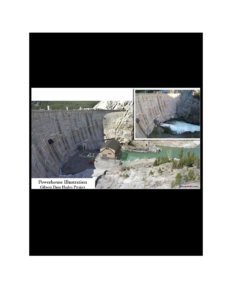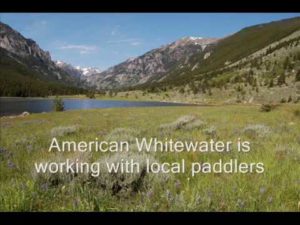Idaho’s 2021 salmon and steelhead returns are abysmal. What is happening?
This year’s returns for Idaho’s salmon and steelhead have been abysmal. Columbia Basin steelhead returns are the lowest ever recorded since salmon run counts began at Bonneville Dam in 1945, falling 57% short of the already anemic pre-season run predictions. Fishing closures and restrictions have been implemented throughout the region, impacting guides, outfitters, and the tourism industry. Low returns mean low numbers of wild fish spawning, a tremendous setback to the already struggling populations. Hatcheries are also in trouble of collecting too few fish for broodstocks.
In a typical year, by September 1st, 75% of hatchery steelhead heading toward the Snake and Salmon rivers have passed over Bonneville Dam. Last year, 69,287 steelhead had crossed Bonneville by the start of September. Only 37,929 steelhead had passed through the dam as of September 1st of this year, a mere 28% of the ten-year average for this date and the lowest count through Bonneville Dam in history.
Similarly, within one human lifetime, Idaho’s wild Spring-Summer Chinook have declined by 93%. Scientists anticipate that by 2025, three-quarters of the Snake River basin’s Spring-Summer Chinook populations will be facing imminent extinction. Last year, 8,556 wild fish passed over Lower Granite Dam, totaling less than 7% of the Idaho Department of Fish and Game’s recovery goal of 127,000. New projections place this year’s return equally as low, if not lower.
Sockeye have struggled with this year’s poor conditions as well. Fish and Game collected 185 Snake River sockeye at Lower Granite Dam, cutting their migration to the Stanley Basin short as a precaution. A mere 34 fish completed the entire journey through Central Idaho. Their extremely low numbers leave their populations severely vulnerable to extinction, and this year’s numbers indicate a very low success rate for Idaho’s sockeye.
Low return numbers have caused state officials to significantly reduce limits for sport fisheries up and down the Columbia-Snake River. Officials in Oregon, Washington, and Idaho have swiftly implemented fishing closures, reduced bag limits, and catch-and-release regulations. While these actions are important for protecting salmon and steelhead, another year of low returns and fishing closures is a devastating blow to our recreation and guiding industry, which comprises 3% of Idaho’s economy.
What is happening?
Water temperatures in the Columbia-Snake reservoirs exceeded 68 degrees (F) all summer and into the first days of September, a lethal temperature threshold for salmon and steelhead. At 68 degrees, salmon are highly vulnerable to disease, infection, and predation, and the oxygen and heat stress alone can easily kill these cold-water species. Video footage from July of this year showed sockeye salmon dying in hot water in the Columbia River, suffering from fungal infections caused by high water temperatures. These conditions are forcing steelhead to remain very low downriver, stalling or entirely preventing their trip to spawning grounds.
According to the Environmental Protection Agency’s most recent analysis on water temperatures in the Columbia-Snake Rivers, the single greatest contributor to increased water temperatures in the river system is the Lower Snake River Dams and the series of slackwater reservoirs behind them. The reservoirs raise water temperatures and prevent the river system from cooling off as heat energy is trapped inside the large, slow-moving bodies of water.
For a population to thrive, a minimum of 2-4% of juveniles(smolts) must return to their birthing grounds to spawn as adults. Currently, less than 1% of Idaho’s juvenile salmon can return as adults, struggling to survive the series of slow moving reservoirs behind the eight dams that impede their journey to and from the ocean. While all salmon throughout the Columbia River Basin are facing challenges, salmon runs that encounter 4 or fewer dams throughout the Basin are meeting the 2-4% smolt-to-adult return rate. The stress of navigating eight dams has proved too much for salmon.
The Solution
The single largest contributor to declining salmon runs is one factor that we have the capacity and ability to change: the Lower Snake River Dams. Nearly $18 billion has been spent on salmon recovery efforts, and all of the Snake River salmon runs remain threatened or endangered. Removing these dams to restore a free-flowing river system is the single most impactful action we can take for salmon recovery in the Columbia-Snake River Basin.
Since the Lower Snake River Dams were constructed, there has been a direct correlation to the decline of wild salmon populations. For three decades, science has demonstrated that breaching the Lower Snake River Dams is the key to salmon recovery. The most recent Draft Environmental Impact Statement for the Columbia River System Operations stated that the only plan of operations that would allow salmon to reach the necessary smolt-to-return ratio is breaching the Lower Snake River Dams. It is also the only option that would successfully abide by the Endangered Species Act, which these federally managed dams currently violate.
It’s time to act, before we lose these incredible, iconic, and ecologically necessary species to extinction.
What You Can Do
Breaching the Lower Snake River Dams would require an act of Congress, and fortunately, a member of Congress is championing salmon recovery. Idaho Congressman Mike Simpson has proposed a plan for investing in wide-scale infrastructure improvements throughout the region that would replace the services provided by the dams, and would ultimately recover salmon through restoring a free-flowing Lower Snake River. However, Congressman Simpson has told us that he needs fellow members of Congress to work alongside him to help bring about real change.
Demand that your representatives take a stand for salmon, and work alongside Congressman Simpson to restore the Lower Snake River and bolster the entire Northwest. Your voice can make a difference, and our salmon need you to speak for them before it is too late.
You can make a difference today by supporting Idaho Rivers United and our efforts to advance salmon recovery for the region. Your donation makes our work possible, and allows us to continue to advocate for our iconic and imperiled wild salmon.


